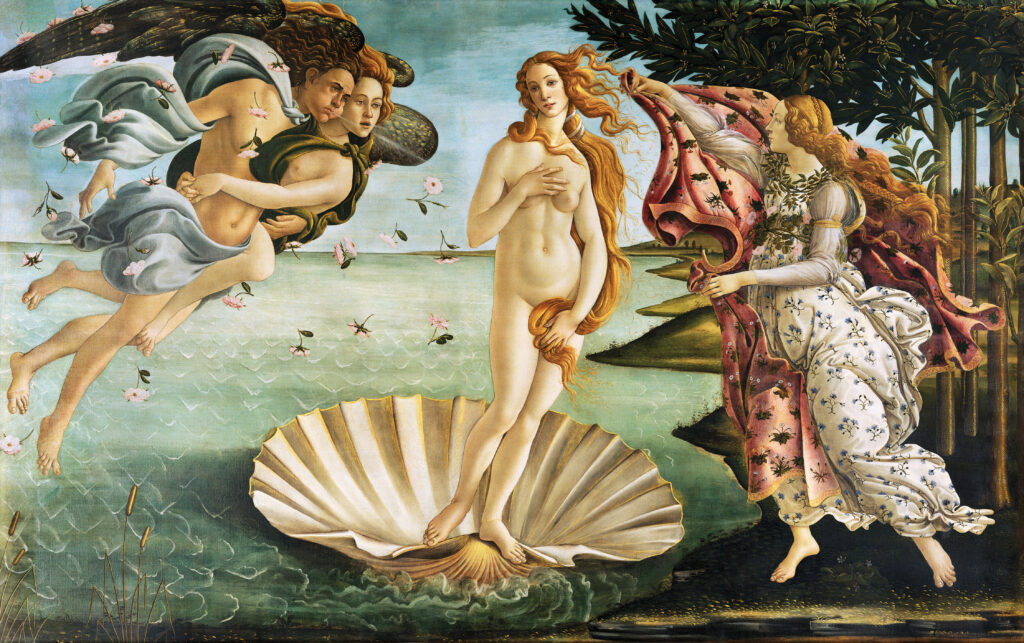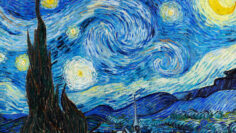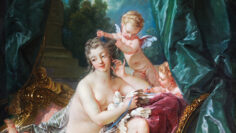The Birth of Venus by Sandro Botticelli is one of the top paintings in the world and features a nude Venus rising out of a calm turquoise sea, her auburn hair twirling around her body. Created in the late 15th century for the Medici family, it is large at five feet by nine feet and is well-known for its remarkable beauty and detail.
Venus, the goddess of love and beauty, stands at the center of the painting on top of a large seashell, being blown to shore by the wind god Zephyr where she is greeted by Flora, the goddess of Spring. In the background there are falling roses, a field of violets, and a grove of orange fruit trees, in addition to the clear blue sky and sea.
The painting is inspired by Greek and Roman mythology, but it is said that Botticelli’s intent was to depict beauty as a way to contemplate the divine. It was the first Tuscan painting to be done on canvas versus wood, and was also the first “secular” painting of its time to incorporate nudity, which was previously only used in religious art to depict the sin of Eve and caused great controversy.
About Sandro Botticelli
Alessandro di Mariano Filipepi was born in Florence, Italy in 1445. He is one of the great masters and is known to the world as “Botticelli” which means “small wine cask.” As a youth he did not do well in school and instead went directly into apprenticeship and studied under Filippo Lippi. He opened his own studio in 1470 at 25 years old, and was one of few artists that enjoyed fame during his own lifetime, as a result earning high commissions for his work.
At the highlight of his career he was employed by the Pope to paint frescoes in the Sistine Chapel however his career peaked from 1478 to 1490. As his artistic style changed and the Florence elite changed with the world due to plagues and political unrest, he died in 1510 unmarried and penniless.
Did you know
Botticelli was in love with the painting’s model, Simonetta Vespucci, a young woman of Florence’s elite who died when she was just 22 years old. Botticelli requested his own burial to be at the foot of her grave and as such beauty and love are thought to be the central theme of the work, especially as a way of contemplating the divine.





